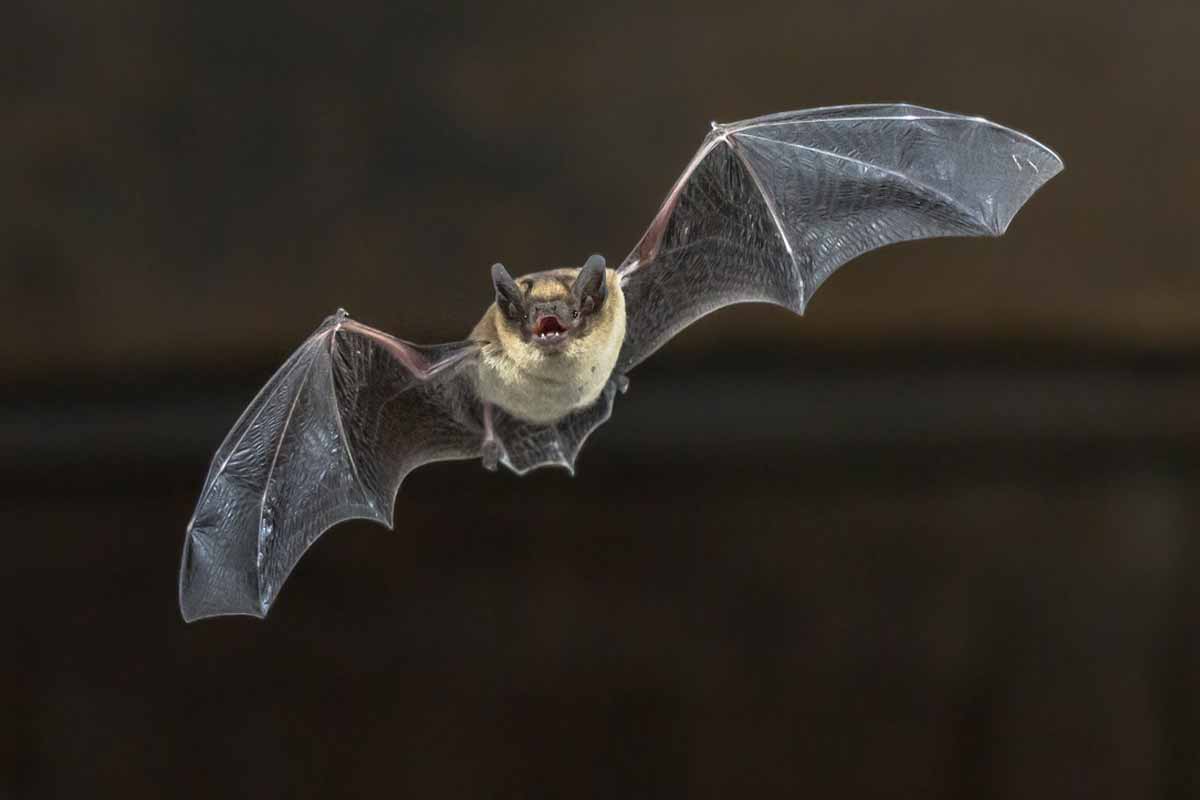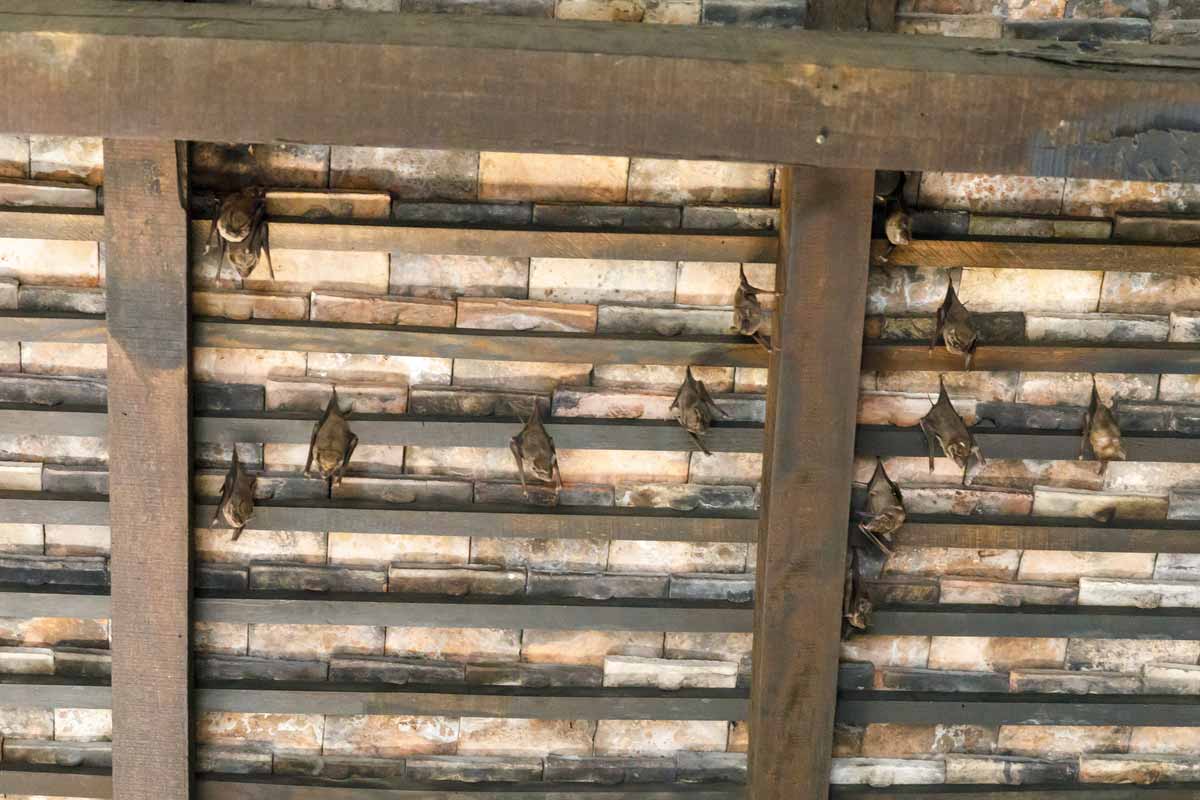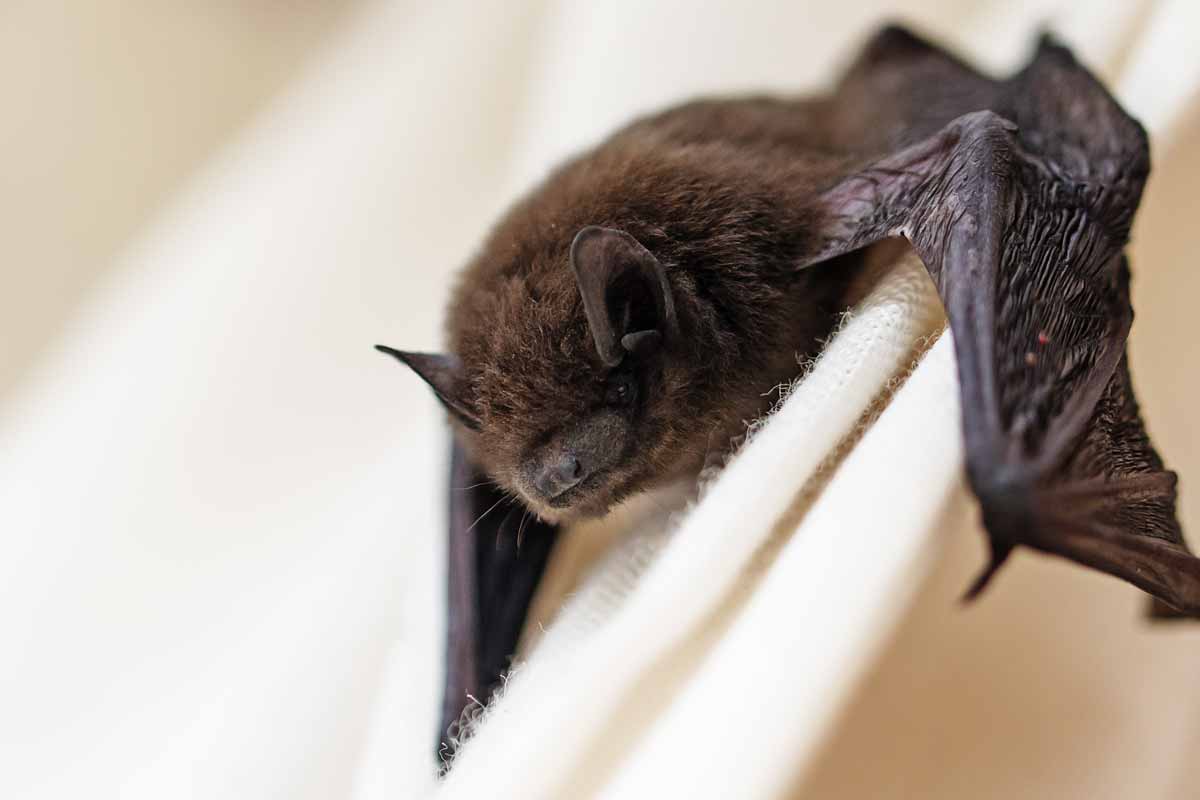Bats In the Attic
15 min read Updated for March, 2019
Family keepsakes, holiday decorations, and unwanted creatures can all end up calling the attic home. And depending on the animal you find among the old toys and Christmas tree ornaments—it can cause great panic. Mice and rats are common problems, but bats can also take up residence in your attic.
Bats are important to the ecosystem; they help control the insect population—eating up hundreds of mosquitoes and moths each day. But that doesn’t mean we want them living with us.
Bat Problem?
Bat Sounds
There are none of the screeching or shrieking sounds from bats that Hollywood portrays. In fact, bats are very quiet using echolocation to navigate their surroundings, which—if human ears can pick up—comes across as clicking sound. If there are enough of them, you may hear them chirping at dusk.
Bat Tracks
As a flying mammal, it is very rare to come across bat tracks; bats are usually discovered by the telltale buildup of bat guano (droppings) on the side of the house of near holes and crevices.
Bat Poop
Bats tend to leave their waste in a pile near the entrance of their nesting spot, which is how you’ll know you have an issue. Bat droppings are similar in size to grain of rice, but longer and pretty much odorless. They don’t harden (like rodents) and may include undigested insects. But if crushed becomes powder, which allows for easier transmission of disease.
How Do I Know if it’s a Bat?
Because bats are nocturnal, they sleep during the day and only fly around at night – usually at dawn or dusk. Just because you spot one or more flying near or around your house doesn’t mean you’re living under the same roof. Bats can travel up to 30 miles a night searching for food.
One way to know if bats are roosting in your attic is by smell. Their urine has a strong odor like ammonia, and their droppings (known as guano) also have an offensive odor. Guano will be on the floor below where they hang to sleep, but you may also find it at their entry and exit point of your house. Bat droppings are about the size of a grain of rice, and you’ll be able to see shiny bits of insects in it.
Bats are noisy creatures, especially if there is a large number of them. At dawn, dusk or during the night are the best times to hear them. You may hear squeaking or scratching as they’re leaving out to find food. If there are several bats in your attic, it may sound like birds flying around.
The best way to know for sure is to check for yourself. Go into the attic during the day with a flashlight. Before you do this, make sure you are wearing clothing from head to toe, wear goggles over your eyes and a surgical mask to cover your nose and mouth. Don’t go all the way into the attic, but enough where you can close the opening to the attic behind you, so they don’t get into the central part of your house. It should only take a few seconds to shine the flashlight around. If you have bats, you will see them hanging upside down asleep.

Most bats weigh less than two ounces and navigate in or out of a space about the size of the end of your little finger.
How Do Bats Get in the House?
There are several different ways bats get into our attics and homes. Sometimes, it’s accidental, but other times bats are looking for the three things they need—safety from potential predators, a warm place to hibernate, or a nesting spot to birth and raise their young.
They may look huge flying around, but bats don’t need much space to gain access to your home. Most bats weigh less than two ounces and navigate in or out of a space about the size of the end of your little finger.
A routine roof inspection is important. Bats can get inside your attic because shingles or roof tiles are loose are missing. You’ll also want to check around your house for cracks, holes or loose boards in your siding. An area that is only a couple of inches wide is enough room for a bat to fly inside.
Over time vents age and start to break down and become damaged, which creates another good passageway for bats to get in. Chimneys without caps or windows or doors without screens that are left open are all good entry points for the flying mammals.
There are licensed professionals trained to get rid of them completely and humanely.
How to Get Rid of Bats
If you’ve determined you have bats in your attic, your next step will be getting rid of them. The best way is to call an expert. There are licensed professionals trained to get rid of them completely and humanely. But if do-it-yourself is more your style, you’ll want to do a couple of things first.
You’ll need to determine how the bats are getting in and out of your house and then seal up every possible crack and crevice that could be potential entry or exit points. Leave only the main entry, and exit point unsealed. Obviously, if you catch the bat flying in, that’s the easiest way to know. But you can also look for urine and guano stains. They will often relieve themselves before entering “home.”
You’ll then need to get a bat exclusion device or netting. It’s designed so the bats can fly out, but not back in. Exclusion devices and netting can be purchased online, at home improvement or hardware stores. Follow the instructions for installation and then once you are sure all the bats are out, seal up the main entry point. Bats have their babies in the summer, so you don’t want to seal off the hole if there is the possibility of baby bats inside.

The smell of the guano and urine is enough of a problem, but breathing it in can also cause lung issues, like histoplasmosis.
Cleaning Up the Mess
Bats can leave a mess behind, and it’s important to get it cleaned up. Over time, the guano can destroy the wood and drywall in your home, causing structural damage. The smell of the guano and urine is enough of a problem, but breathing it in can also cause lung issues, like histoplasmosis. Hiring a professional is the best method to ensure it is properly cleaned up. But if you choose to do it yourself, before you begin the cleanup be sure you are wearing protective clothing from head to toe, goggles over your eyes and a mask over your face and nose.
You can shovel up the guano and put it in sealed bags. Make sure you dispose of it properly. Once you can’t shovel up anymore, you’ll need to use a filter vacuum cleaner to vacuum the rest of it up. All the surfaces should then be scrubbed down with an enzyme-based cleaner.
article continues below
It doesn’t matter how small the hole is; bats can squeeze through an area a half inch to an inch wide.
How to Keep Bats Away
Once you get rid of the bats, you want to ensure they don’t come back. Bats are creatures of habit and will return to the same roosting spots year after year. If you live in a warm part of the U.S., you’re more susceptible to a bat problem. Bats prefer warmer temperatures and migrate during the winter.
It’s important to do a thorough inspection of your home and seal up every hole and gap you may find, paying special attention to the roof line. It doesn’t matter how small the hole is; bats can squeeze through an area a half inch to an inch wide. You can use caulk, sealant, polyurethane foam, steel screenings or other construction materials to cover any hole in the exterior of your home. Also, repair any damaged window screens or vents you may have and cap your chimney.
There are bat traps available for purchase, but they are usually a waste of money. The traps don’t work well, and the bats usually come right back. Repellants aren’t a good option either as they typically don’t work. Fumigating or poisoning a bat is illegal in many places, so it is best not to attempt that.

Bat Disease
There are plenty of reasons to not want bats in your attic, one of them being disease risks and concerns. If they’ve been nesting in parts of your home, you’ll want and need to clean up any mess they may leave behind. It is essential, if at all possible, to not touch the bat or have it touch you. But if you do come in contact with one or feel sick from exposure to it, it’s best to see your healthcare professional and get checked out.
article continues below
Sources:
https://www.canr.msu.edu/news/how_to_remove_flying_bats_from_your_house
www.batsintheattic.org
www.batcon.org


